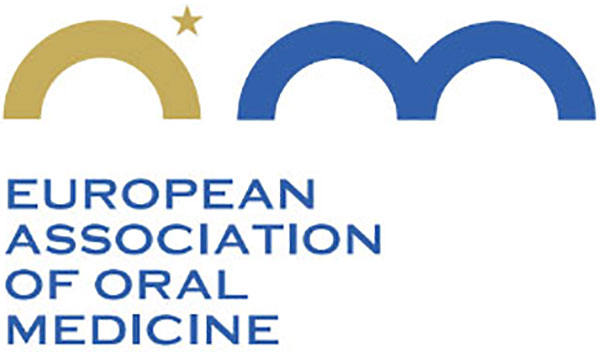Oral Lupus Erythematosus
Definition
Lupus erythematosus (LE) is an autoimmune disorder, in which the body's own immune system attacks its own tissues, especially components of the cellular nuclei. Lupus is the latin for wolf and erythematosus indicates red-like. Thus, LE stands for ”the red wolf” which should be in contrast to lupus vulgaris, ”the common wolf” which in the old days designated the skin of the face in patients with cutaneous tuberculosis.
There are two main forms of lupus, discoid LE (DLE), affecting skin and mucous membranes, and systemic LE (SLE), which may also affect joints, visceral organs and other tissues. The classification may now also include a bullous form, a neonatal form (NLE), an acute cutaneous form (ACLE), a subacute cutaneous form (SCLE) and a chronic cutaneous form (CCLE). There is also a special subgroup of SLE with very early onset, childhood-onset systemic lupus erythematosus, cSLE. In addition, there is probably a drug-induced, and thus potentially reversible form of LE.
Epidemiology
LE affects women 9-10 times as frequently as men and is most prevalent in ages from 18 to 65 years with a peak between 25-45 years, although it has been found in children of 10 years of age. At older ages the gender difference seems to be considerably reduced. SLE may affect up to one white person in 2500 people and one out of 250 African American women. Also Asians show relatively high prevalence figures. The different forms may change in the same person. Thus, DLE may develop into SLE in about 20% of the cases. The occurrence of oral mucosal lesions in LE patients is about 25-75% in different studies. Arthralgia is the most prevalent finding, 65%, and cutaneous lesions are encountered in about 25%.
Clinical presentation
The best-known sign of LE is the so-called facial butterfly rash, most frequently seen in SLE. Other manifestations seen on the skin are vasculitic dermatitis, often seen on the fingers and behind the ears, maculopapular eruptions, Raynaud’s phenomenon and alopecia.The erythematous skin lesions comprise well-defined patches with adherent scaling. SLE may show an array of features including fatigue, involvement of the kidneys, the heart, lungs and brain, joint and muscle pain, depression and also anemia. The arthritis is symmetrical and similar to rheumatoid arthritis.
Most patients with LE are sensitive to sunlight which can aggravate rashes. Severe aggravation with ulcerations may e.g. be found on the vermilion border.
Similar oral mucosal lesions are seen in DLE and SLE. The typical lesion comprises a central erythematous mucosa surrounded by a slightly elvated white border. This border is characterized by fine perpendicular white ”paint-brush”-like lines. The lesions are most often found in the palate and in the buccal and vestibular mucosa. About 50% of the lesions are Candida-infected. Some lesions, especially in the palate, may though be quite ”unspecific” just appearing as ill-defined superficial ulcerations. About 75% of the patients complain of oral symptoms e.g. dryness, soreness and a burning sensation especially when eating hot and spicy food.
SLE is closely associated with excretory gland involvement. Thus, oral and ocular symptoms are frequent findings. Minor salivary gland lymphocytic infiltrates are found in 50-75% of the patients, whether they are complaining of dry mouth or not. Unstimulated salivary flow rate is decreased in many of the SLE patients. Also SLE is a diagnostic component of secondary Sjögren’s syndrome.
Aetiopathogenesis
The cause for LE is, as for many autoimmune disorders, unknown. In the development from ”damage” or initiation to clinical appearance, production of circulating autoantibodies to nucleoproteins, antinuclear antibodies (ANA), is the basic event. The initiating process is unknown but possibly a mutation in a gene associated with natural cell death (apoptosis) and making lymphocytes recognize self and not-self molecules is involved, permitting autoreactive lymphocytes to circulate and to attack the own body cells. Another theory might be that LE autoantibodies are a sequelae of cross reactions to exogenous antigens e.g. RNA retroviruses. Factors such as exposure to sunshine, infections and drugs may trigger SLE reactions in some patients. Whatever the aetiology, there seems to be a genetic predisposition, expressed as associations with specific HLA/MHC antigenic profiles.
One main defect in SLE is dysfunction of B-lymphocytes. Also suppressor T – lymphocytes are reduced in number, permitting a considerable increase in autoantibodies. As result of the contact between the autoantibodies and the body’s own cells immune complexes appear. The main pathology is mediated via these immune complexes which are deposited in e.g, blood vessels, glomerular basement membranes and skin. The complexes activate the complement system thereby releasing lysosomes and an array of cytokines leading to malfunction/ damage in the organs where the complexes are deposited.
Diagnosis
The oral manifestations of LE may be difficult to differentiate from lichen planus lesions. However, palatal lesions are more common in LE than in lichen planus. A typcal skin biopsy specimen of DLE and SLE may show hyperkeratosis with follicular keratin plugging, acanthosis, liquefaction degeneration of the basal epidermal layer and thickening of the basement membrane. Further, there are heavy lymphoid aggregates around blood vessels and close to the basement membrane. In oral lesions these perivascular infiltrates are less pronounced and instead the submucosal lympocytes show a bandlike appearance. Immunofluorescence may demonstrate PAS-positive thickening of vascular membranes and a broad PAS-positive subepithelial band – sometimes called a lupus band. However, the histopahology is not specific and may be difficult or impossible to differ from characteristics compatible with a lichen diagnosis. In SLE circulating, autoantibodies are almost always found and the diagnosis may be supported by identifying one or more of them. Antinuclear antigen, ANA, may be found in >95%, anti-double stranded DNA in 40-60%, anti-Ro (anti-SSA often found in Sjögren’s syndrome) in 30-40% and anti Smith antigen in 20-30%. However, of these autoantobodies only anti-DNA and anti-Sm are to some extent specific for LE.
Treatment
LE may show manifestations in and symptoms from many organs in the body and systemic treatment is therefore required. The drug of first choice is the antimalarial hydroxychloroquine, especially in patients with polyarthralgia and skin manifestations. This treatment carries a small risk for developing retinopathy which is reversible after the drug has been withdrawn. There also a risk for oral mucosal melanin pigmentation. In cases of LE skin lesions sun block for UVA and UVB is important. Treatment may be supplemented or changed for combinations with topical and systemic corticosteroid. Systemic steroids are used in more severe cases of LE. Sometimes methotrexate or azathioprine may be used as steroid-sparing drugs. Thalidomide has a good effect on DLE lesions but is most often avoided because of its teratogenicity and the risk of neuropathies.
Oral manifestations of LE do not always resolve after the systemic treatment. Additional topical treatment may then be applied. Since oral LE lesions are frequently infected by Candida, antimycotic treatment should be given (see chapter on Candidosis). Such treatment could also preferably be given supplementary to systemic treatment with immunosuppressive drugs. After some days of antimycotic treatment (which should be continued for 2-4 weeks), topical steroids should be used similar to those recommended for oral lichen lesions (see chapter on Lichen planus).
Prognosis and complications
So far there is no cure for LE. Renal disease causes the majority of morbidity and mortality, and in some cases dialysis and kidney transplantation may be necessary. Up to 85% of patients with SLE may suffer from blood disorders including thrombocytopenia and haemolytic anemia. Complications also include strokes, pulmonary embolism or abortion. Pericarditis, endocarditis and myocarditis may develop. In order to follow disease activity, including also predicting damage and steroid requirements, activity acouple of indices have been developed and evaluated - the Systemic Lupus Erythematosus Activity Index (SLEDAI) and European Consensus Lupus Erythematosus Measurement (ECLAM).
The 10-year survival for LE exceeds 85%. Mortality rate for LE is thus low, apart from severe cases of disseminated LE with a mortality rate of about 15%. Oral ulcerative discoid lesions have been considered to be precancerous/potentially malignant.
Prevention
Since the cause of LE is unknown, the possibility for prevention of the outbreak of the disorder per se is highly questionable. It has been suggested that risk factors that are likely to signal transition of cutaneous into systemic LE are high ANA titers (> 1:320) and the presence of arthralgias. Cutaneous LE patients who exhibit these symptoms should be monitored closely, since they may be at increased risk to develop SLE.
Some preventive measures may be taken to reduce signs and symptoms as well as side effects of administered therapeutic drugs. Sunglasses, sunscreen, protective clothing and oils to protect the skin from UV light may prevent or reduce skin rashes and possibly nausea. Medication with steroids may prevent flare-up of polyarthritis and skin lesions. However, all patients on long-standing high doses of systemic corticosteroid therapy are at risk for the development of osteoporosis, which may occur in more than half of the patients with SLE. In order to prevent this development, steroid doses should be reduced to a minimum and the patient should be given calcium, vitamin D, calcitonin and possibly also bisphosphonates.





Further reading
1 Fabbri P, Cardinali C, Giomi B, Caproni M. Cutaneous lupus erythematosus: diagnosis and management. Am J Clin Dermatol 2003; 4:449-65.
2 Jensen JL, Bergem HO, Gilboe I-M, Husby G, Axéll T. Oral and ocular sicca symptoms and findings are prevalent in systemic lupus erythematosus. J Oral Pathol Med 1999; 28:317-22.
3 Orteu CH, Buchanan JA, Hutchison I, Leigh IM, Bull RH. Systemic lupus erythematosus presenting with oral mucosal lesions: easily missed? Br J Dermatol 2001; 144:1219-23.
4 Patel P, Werth V. Cutaneous lupus erythematosus: a review. Dermatol Clin 2002; 20:373-85.
5 Schiødt M. Oral manifestations of lupus erythematosus. Thesis. Int J Oral Surg 1984; 13:101-47.
Links
www.nlm.nih.gov/medlineplus/printency/article/000435.htm
www.aafap.org/afp/980600ap/petri.html
www-medlib.med.utah.edu/WebPath/TUTORIAL/SLE/SLE.html

